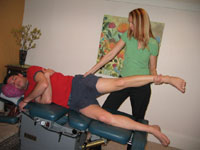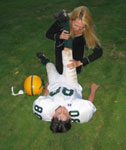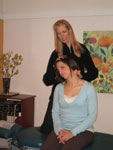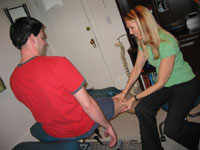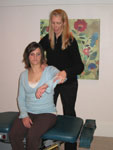Active Release Technique® (ART) is a method of deep tissue treatment specifically developed for the removal of scar tissue or fibrous adhesions. When muscles and/or joints are injured, spasm and inflammation occur and are followed by buildup of fibrous deposits . The body does this to form stronger connective tissue. Each individual has a different rate of scar tissue growth, just as each person has a different pain tolerance. In some areas of the body, scar tissue can add strength and durability, yet in others, pain and inflexibility.
ART® goes beyond passive massage, stretching, or deep tissue work. It is active, requiring the patient to contract muscle groups while the doctor assists the tissue stretching with direct pressure. Gentle tissue contact is one of several ways used to minimize any tissue pain or tenderness. ART stretches and softens scar tissue which results in fewer restrictions to circulation, increases range of motion, and restores muscle strength.
Patient Benefits:
- Diminishes nerve irritations and entrapments
- Softens scar tissue and calcium deposits
- Decreases painful symptoms by releasing natural pain killers
- Improves muscle strength, tone, and circulation
To learn more about ART® please visit their web site at:
www.activerelease.com
What is an ART® treatment like?
Active Release Techniques®, as the name implies, uses motion to fix the problem. The ART provider uses his or her hands to evaluate the texture, tightness and movement of muscles, fascia, tendons, ligaments and nerves. Once the injury has been assessed, the provider uses hands on treatment and patient motion to "free up" the problem areas.


